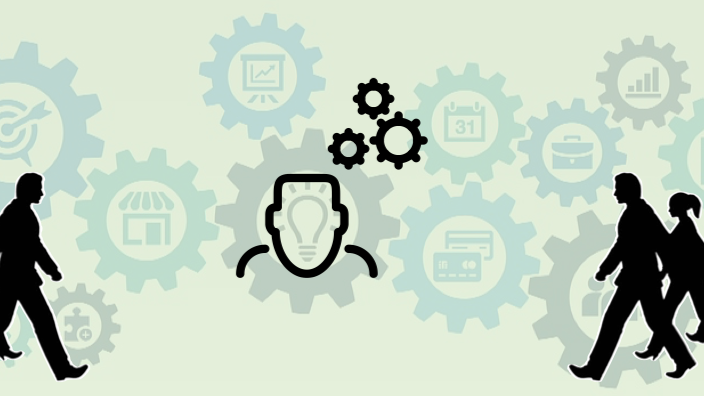Sales productivity is the backbone of a successful business, and as we step into 2025, improving efficiency is more crucial than ever. With rapidly evolving technology, changing consumer behaviors, and increased competition, sales teams must adapt to new strategies to maximize output while minimizing effort. Boosting sales productivity is not just about working harder—it’s about working smarter. Leveraging automation, refining sales processes, and prioritizing customer relationships can significantly enhance performance. In this article, we will explore actionable techniques to help you increase your sales productivity, drive better results, and stay ahead in the competitive landscape of 2025.
Leverage Technology for Efficiency
Technology is revolutionizing sales, enabling teams to streamline operations and close deals faster. Investing in customer relationship management (CRM) tools, AI-powered analytics, and sales automation software can help reps focus on revenue-generating tasks rather than administrative duties. AI-driven insights allow businesses to predict customer behavior and personalize outreach, increasing engagement and conversions. Virtual sales assistants can handle repetitive tasks, freeing up time for human interactions. Additionally, integrating communication platforms ensures seamless collaboration among sales teams, leading to faster decision-making and improved productivity. Embracing technology is the key to staying competitive in 2025.
1. Set Clear Goals and Track Performance
Setting specific, measurable, achievable, relevant, and time-bound (SMART) goals ensures a clear direction for your sales team. Regularly tracking key performance indicators (KPIs) helps identify strengths and weaknesses, allowing for necessary adjustments. Sales analytics tools provide real-time data to monitor performance and optimize strategies. Establishing weekly or monthly check-ins fosters accountability and keeps the team motivated. Additionally, recognizing and rewarding high-performing sales reps can drive motivation and encourage continuous improvement.
2. Optimize Your Sales Funnel
An optimized sales funnel helps guide potential customers seamlessly from awareness to conversion. Start by analyzing each stage of the funnel to identify bottlenecks. Improve lead generation by targeting the right audience through data-driven marketing. Ensure that follow-ups are timely and personalized, increasing the likelihood of conversions. Automating lead nurturing campaigns through email sequences or chatbots can keep prospects engaged. A well-structured sales funnel allows teams to work more efficiently, reducing the time spent on unqualified leads and focusing on high-potential clients.
3. Streamline Administrative Tasks and Payroll Pricing
Administrative tasks can take up a significant portion of a salesperson’s time, reducing their ability to focus on selling. Automating tasks such as data entry, report generation, and email follow-ups can save valuable hours. Investing in payroll management software can help businesses handle commissions and bonuses seamlessly, reducing errors and delays. Managing payroll effectively ensures a fair pay structure that drives sales team motivation. By minimizing time spent on administrative burdens, sales teams can concentrate on closing deals and building strong customer relationships.
4. Enhance Sales Training and Coaching
Ongoing training is essential for keeping sales teams competitive. Providing continuous learning opportunities ensures that sales representatives stay updated with the latest trends and techniques. Implementing regular coaching sessions helps identify individual challenges and develop personalized improvement plans. Key components of effective sales training include:
- Role-playing exercises to practice real-life scenarios
- Access to e-learning platforms with industry-specific courses
- Regular feedback sessions to refine sales pitches
- Mentorship programs for new hires to learn from experienced reps
- Keeping teams informed about product updates and market changes
5. Foster a Strong Sales Culture
A positive sales culture enhances motivation, collaboration, and overall team performance. Encouraging healthy competition through sales contests and incentives can drive engagement. Creating an environment where knowledge-sharing is valued helps reps learn from each other’s successes and challenges. Open communication channels between management and sales teams ensure that concerns are addressed promptly. Promoting work-life balance prevents burnout and keeps employees motivated. A strong sales culture contributes to long-term success by keeping the team inspired and aligned with business goals.
Conclusion
Boosting sales productivity in 2025 requires a combination of strategic planning, technology adoption, and a strong team culture. By leveraging the right tools, streamlining processes, and continuously training sales reps, businesses can enhance efficiency and drive better results. Setting clear goals, optimizing the sales funnel, and managing administrative tasks effectively allow sales teams to focus on what truly matters—building relationships and closing deals. Implementing these strategies will position your business for sustained success in the ever-evolving sales landscape. Start making these improvements today to see significant growth in your sales performance.











